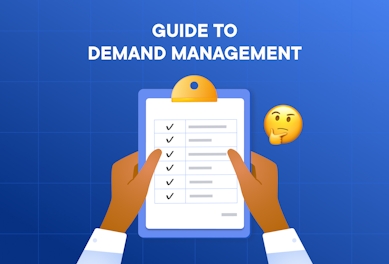How to Safely Pack and Ship Plants
Get top tips on how to ship plants and prepare live plants, succulents, and houseplants for the process. Read the FAQs on shipping costs and more.

If you’re using last-mile delivery for your plant nursery, florist business, or gardening store, Circuit for Teams can help your brand blossom.
Welcome to the botanical renaissance.
TikTok plant videos and leaf-loving millennials are driving a resurgence in popularity for all things green.
Plant sales are exploding.
Demand for houseplants surged by 18% during the COVID-19 pandemic.
And millennials represent the biggest demographic growth in houseplant sales at 65%.
With the market size of the US plant- and flower-growing sector increasing from $14.18 billion in 2019 to $15.85 billion in 2021, the market is blossoming.
If you’re in the plant business, you know your plants need to travel to their destination safely and securely.
You don’t want Fernie Sanders to end up brown, squished, and damaged.
Not only is this tragic treatment for a fern, but it’s also bad business.
Damaged deliveries can result in unhappy customers, and cost your business to replace the poorly packed plants or refund the shipment.
But shipping live plants by mail isn’t always easy. You can do a few things to make sure your Elvis Parsely or Leaf Erickson arrive healthy and happy.
In this article, I’ll tell you everything you need to know about shipping plants and how to get your babies to the plant parents anxious to receive them.

How to pack and ship plants in 5 steps
Packing paper or bubble wrap?
Plastic bags or cardboard boxes?
When it comes to getting Snake Gyllenhaal and Tree Diddy to their new home, your small business needs to find a way that works best for you, your product, and your customers.
Shipping plants involves careful preparation and packaging.
And doing it right depends on your understanding of the type of plant and the best shipping materials and techniques.
I’ll dive into my top DIY tips for keeping your plants healthy, alive, and thriving during shipping in the FAQs later in this post.
For now, let’s take a look at the steps you’ll need to take to get your plants ready for their journey.
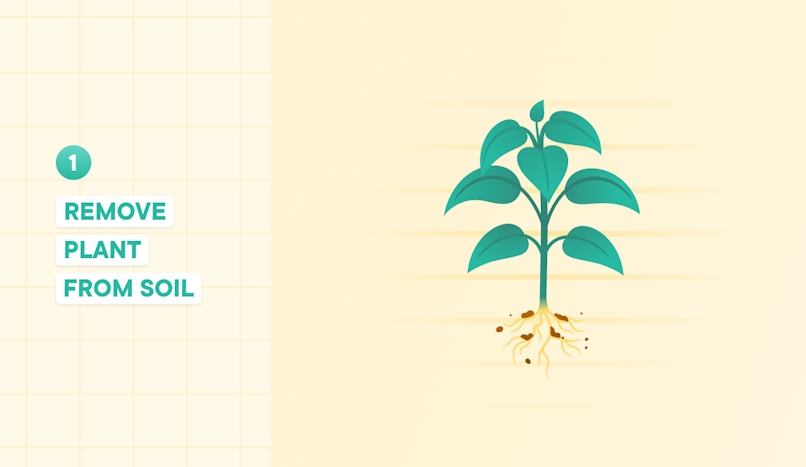
Step 1: Remove the plant from soil
The best way to ship most plants is with bare roots.
That means removing the plant from its potting soil and any other medium it’s growing in.
This also goes for most potted plants.
Even if a customer orders potted plants, you can’t just place the potted plant as-is in a box and hope that it arrives in one piece.
The soil could spill, the pot could break, and the plant could be damaged in transit.
If you’re shipping a sturdier plant with a thick bark stem or a tree that you can’t remove from the soil without damaging it, keep the plant in the pot, put it in a bag, tightly pack a moist paper towel over the soil, and wrap the pot in a plastic bag before securing it with tape.
If you’re sending a potted plant or a plant and pot separately, wrap the pot with bubble wrap or other cushioning to protect it from damage.
Try to keep the plant upright and mark the box with “This End Up.”
Keep in mind that sending potted plants will increase the package weight and cost of shipping.
For plants you can remove from the soil, grab your gardening gloves and gently loosen the roots.
Roots are incredibly delicate and prone to breakage, so take your time and be careful.
You may need to use a small knife or garden spade to loosen any roots that are tightly bound up in the potting soil.
Once you’ve loosened the roots, lift the plant out of its pot or growing medium.
Shake off any excess soil.
You don’t need to rinse the roots, as some leftover soil can help keep the plant happy on the way to its new home.
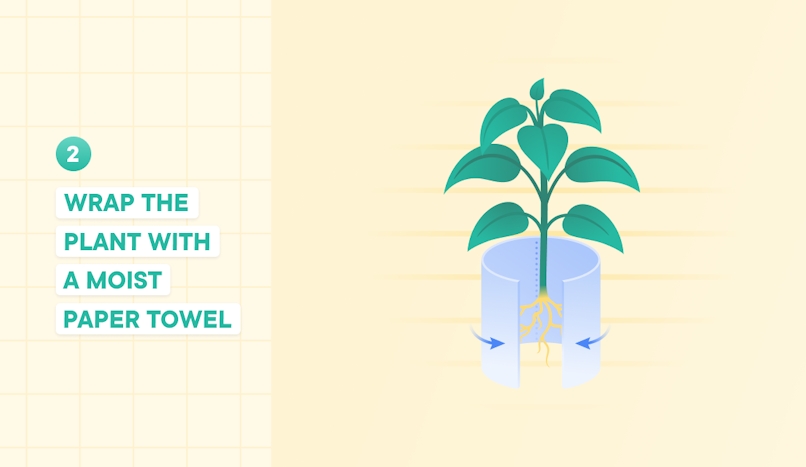
Step 2: Wrap the plant with a moist paper towel
The next step is to wrap the roots in a moist paper towel.
This step is important because it will help keep the roots from drying out during shipping.
Use a clean, damp paper towel or cloth and wrap it around the roots.
Be sure not to wrap too tightly as you don’t want to damage the roots.
The damp paper towel will help keep the roots moist and prevent them from getting too much moisture, which can lead to rot.
If you’re shipping a plant with a lot of leaves, like a fiddle leaf fig, you may want to wrap the leaves in a separate damp paper towel to prevent them from drying out.
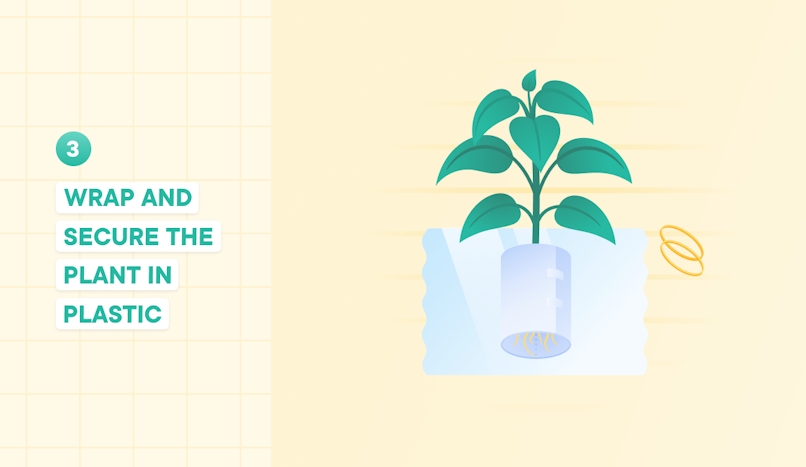
Step 3: Wrap and secure the plant in plastic
Now, it’s time to wrap the plant in plastic.
You can use a plastic bag or plastic wrap.
Depending on the type of plant, you may want to wrap the whole plant. For others, wrapping the roots in a paper towel and plastic might be enough.
If you’re shipping succulents, you may only need to wrap the roots since the leaves can withstand dry conditions.
For leafy green plants like snake plants or spider plants, you’ll want to wrap the entire plant to help prevent the leaves from drying out.
Wrapping the plant in plastic is important to protect it from the elements and prevent it from drying out.
It also helps secure everything in place so the roots aren’t jostled around during shipping.
Once you’ve wrapped the plant in plastic, secure it with tape, plant ties, rubber bands, or twist ties.
If you don’t want to wrap the entire plant in plastic, there is an alternative. Wrap the roots, then roll the whole plant in newspaper to protect the stems and top of the plant.
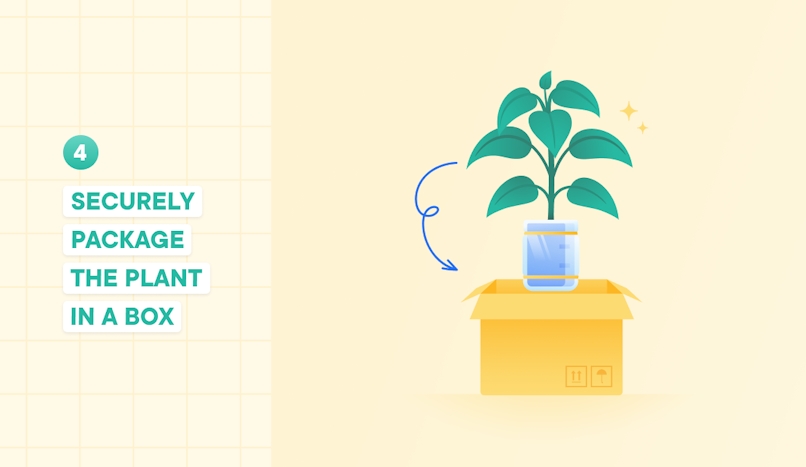
Step 4: Securely package the plant in a box
Use sturdy corrugated boxes when shipping plants.
You want to pick a cardboard box that’s strong enough to protect the plant from potential rough handling during transit.
Find a box with a good amount of cushioning and thick walls.
The box should be big enough so the plant isn’t squished — but not so big that it can shift and get damaged.
If you’re shipping multiple plants in one box, be sure to securely package each plant so they don’t move around during transit.
It’s a good idea to fill any extra room in the box with cushioning, especially if it’s going to travel a long distance.
You can use packing materials like packing peanuts, air pillows, or crumpled newspaper.
Just make sure whatever you use is clean and dry so it doesn’t harbor any pests or mold.
Insert any paperwork and the receipt before closing the lid. Securely tape all of the edges with packing tape.

Step 5: Ship the packaged plant
Once your box is sealed, label it “Live Plants,” “Perishable,” or “Fragile.”
You can also write “This Side Up” to help shipping handlers know how to orient the box.
Although marking the box isn’t a necessary step, it can help your plant get the care it needs during transit.
Fill out the shipping label with the shipping and return addresses.
If you’re reusing a box, be sure to black out any old stickers, labels, or markings.
You can take your plant package to the post office or a shipping company of your choice.
For most plants, it’s best to ship overnight or use two-day shipping so the plant doesn’t sit in a hot warehouse too long.
If you’re shipping in the winter, economy shipping might be OK, depending on the type of plant.
When in doubt, it’s always best to err on the side of caution and choose a faster shipping option.
Be sure to check the shipping company’s guidelines for shipping live plants, as they may have specific preferences.
For example, you’ll need a phytosanitary certificate if you are shipping plants internationally.
You can ship most plants in the US as long as they aren’t banned by the United States Department of Agriculture (USDA).
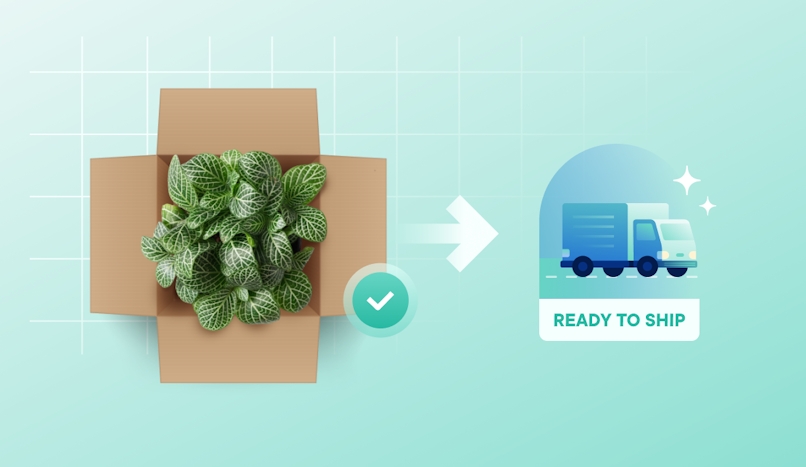
Plant shipping FAQs
Now that I’ve covered the basics of preparing and packing your live plants for shipping, let’s answer some common questions about the shipping process.
How can I keep plants alive during shipping?
Here are some tips for keeping your plants alive and healthy during the shipping process:
- Start with healthy, robust plants. Avoid shipping sick or weak plants, as they are more likely to succumb to stress during transit.
- Pack the plants in clean, dry containers free of pests or disease.
- Ship as fast as your budget allows. If you’re sending through the United States Postal Service (USPS), for example, choose Priority Mail or Express Mail for the fastest transit time.
- Make sure your plants have enough water in the days before shipping, but don’t ship them wet. Wrapping the roots in a moist paper towel is the best option.
- Put fresh-cut flowers in water for a few hours before shipment to prepare them for the dry journey.
- For succulents that hold water, don’t water them two days before shipping so they have time to dry out and won’t die from overwatering.
- If you have to ship plants in soil, semi-dry soil is the best option. Be sure to put the pot or container in a bag and tightly pack a collar or paper towel around the soil so it doesn’t spill.
- Try to ship on a Monday. Some shipping services don’t deliver on the weekends, so shipping early in the week can help make sure your plant doesn’t sit in a hot warehouse over the weekend. Learn if USPS, UPS, FedEx, and DHL deliver on Sundays.
- Check the weather forecast. If possible, avoid shipping during extreme weather conditions like heat waves or cold snaps.
- For long trips, you can add moisture crystals or nutrients to water and paint the slurry onto the plant’s roots before wrapping it in plastic. This will help keep the roots from drying out.
Can I ship plants through USPS?
Yes, you can ship plants through USPS.
Most plants are fine to ship through USPS as long as they aren’t endangered or protected.
The post office has several options for shipping live plants, including First-Class Mail, Priority Mail, and Express Mail.
How much does it cost to ship a plant?
The cost of shipping a plant depends on the plant’s size and weight and the shipping method you choose.
If you plan to ship through USPS, you can use their Retail Postage Price Calculator to get a shipping estimate.
You may not be eligible to purchase shipping insurance because plants are considered perishables.
Can I ship plants internationally?
Yes, you can ship plants internationally, but there are a few things to keep in mind.
First, check the laws in both countries to make sure the plant you’re shipping isn’t on the list of restricted or prohibited items.
You’ll also need to get a phytosanitary certificate from the USDA to ship the plant out of the country.
This certificate proves that the plant is free of pests and disease and meets the importing country’s standards.
Will FedEx ship live plants?
Yes, you can ship flowers and plants through FedEx First Overnight, Priority Overnight, Standard Overnight, or 1Day Freight.
Learn more about how to ship plants and flowers with FedEx.
How long can a plant survive in a shipping box?
The amount of time a plant can survive in a shipping box depends on the plant, the weather conditions, and how well you pack the plant.
Extreme weather can shorten the amount of time a plant can survive in transit.
For example, heat waves can cause the plant to dry out, and cold snaps can damage the plant’s roots.
If possible, avoid shipping during extreme weather conditions.
As a general rule, a plant can survive in a shipping box for up to five days.
Fresh-cut flowers will only last a few days in transit.

Managing shipping yourself? Circuit for Teams can help
If your plant business is blooming locally, you might be handling last-mile delivery yourself.
Handling the shipping yourself is a great way to offer excellent customer service.
But as your business grows, self-shipping can become a time-consuming process that takes you away from other important tasks — like growing your business.
That’s where Circuit for Teams comes in.
Circuit for Teams can help you deliver your plant babies to their new parents faster with optimized routes.
Manage multiple routes with ease, confidently track deliveries, and get proof of delivery when you drop off Aloe Vera Wang and Vincent Van Grow at their new forever homes.



